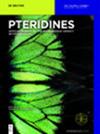诱导型一氧化氮合酶(iNOS/NOS2)在胶质瘤中的表达及其与患者预后的生物信息学分析
IF 0.9
4区 医学
Q4 BIOCHEMISTRY & MOLECULAR BIOLOGY
引用次数: 3
摘要
目的探讨诱导型一氧化氮合酶(iNOS/NOS2)在胶质瘤组织中的表达及其与患者预后的关系。方法采用TCGA数据库和在线分析工具GEPIA分析胶质瘤患者肿瘤及相应正常组织中IiNOS/NOS2的表达。利用cBioPortal在TCGA数据库中探索iNOS/NOS2基因的突变状态。通过LinkedOmics筛选iNOS/NOS2共表达基因。使用LinkedOmics对iNOS/NOS2和共表达基因进行基因本体(GO)和KEGG通路富集。采用log-rank检验比较iNOS/NOS2 mRNA高表达组和低表达组的总生存期(OS)和无病生存期(DFS)结果。本研究包括22例接受手术治疗的胶质瘤患者。实时荧光定量PCR检测肿瘤组织和正常脑组织中iNOS/NOS2 mRNA的表达。结果胶质瘤组织与正常组织iNOS/NOS2 mRNA表达水平差异无统计学意义。实时荧光定量PCR结果显示,肿瘤组织与正常脑组织iNOS/NOS2 mRNA表达量差异无统计学意义(p < 0.05)。在两个数据集的1044例胶质瘤患者中发现iNOS/NOS2基因突变率为0.8%。突变类型包括深度缺失(0.4%)、截断(0.2%)和错义(0.2%)。与iNOS/NOS2共表达最多的基因为COL25A1 (rpearson=0.4734, p<0.05)和ALCAM (rpearson=0.4734, p<0.05)。在KEGG通路分析中,iNOS/NOS2主要富集于钙信号通路、Wnt信号通路、GnRH信号通路、HIF-1信号通路和肿瘤通路。iNOS/NOS2高、低表达组总生存期(HR=2.0, p<0.05)和无病生存期(HR=1.6, p<0.05)差异有统计学意义。结论iNOS/NOS2 mRNA高表达组OS和DFS明显降低。iNOS/NOS2可作为胶质瘤预后不良的生物标志物。本文章由计算机程序翻译,如有差异,请以英文原文为准。
Bioinformatics analysis of the expression of inducible nitric oxide synthases (iNOS/NOS2) in human glioma and its correlation with patients’ prognoses
Abstract Objective To evaluate the expression of inducible nitric oxide synthases (iNOS/NOS2) in human glioma and its correlation with patients’ prognoses. Methods IiNOS/NOS2 expression in tumor and corresponding normal tissues of glioma patients was analyzed using the TCGA database and the online analysis tool GEPIA. The mutation statuses of iNOS/NOS2 genes were also explored in the TCGA database using cBioPortal. Co-expressed genes relevant to iNOS/NOS2 were screened by LinkedOmics. Gene ontology (GO) and KEGG pathway enrichment for iNOS/NOS2 and co-expressed genes was performed using LinkedOmics. Overall survival (OS) and disease-free survival (DFS) outcomes between iNOS/NOS2 mRNA high and low expression groups were compared using a log-rank test. Twenty-two glioma patients who underwent operation were included in the present work. A real-time PCR assay was used to detect iNOS/NOS2 mRNA expression in tumor tissue and normal brain tissue. Results There was no statistical difference in iNOS/NOS2 mRNA expression levelss between tumor and normal tissues of glioma. A real-time PCR assay indicated that iNOS/NOS2 mRNA expression in tumor tissue and normal brain tissues were not statistical difference (p>0.05). A mutation rate of 0.8% for the iNOS/NOS2 gene was found using 1044 glioma patients from two datasets. The mutation types include deep deletion (0.4%), truncating (0.2%) and missense (0.2%). The top positive and negative co-expressed gene with iNOS/NOS2 were COL25A1 (rpearson=0.4734, p<0.05) and ALCAM (rpearson=0.4734, p<0.05), respectively. For KEGG pathway analysis, iNOS/NOS2 was mainly enriched in calcium signaling pathway, Wnt signaling pathway, GnRH signaling pathway, HIF-1 signaling pathway and pathways in cancer. The overall survival (HR=2.0, p<0.05) and disease-free survival (HR=1.6, p<0.05) values were significantly different between iNOS/NOS2 high and low expression groups. Conclusion OS and DFS were significantly decreased in high iNOS/NOS2 mRNA expression groups. iNOS/NOS2 can be used as a poor prognostic biomarker for glioma.
求助全文
通过发布文献求助,成功后即可免费获取论文全文。
去求助
来源期刊

Pteridines
生物-生化与分子生物学
CiteScore
1.20
自引率
25.00%
发文量
6
审稿时长
>12 weeks
期刊介绍:
Pteridines is an open acess international quarterly journal dealing with all aspects of pteridine research. Pteridines are heterocyclic fused ring compounds involved in a wide range of biological functions from the color on butterfly wings to cofactors in enzyme catalysis to essential vitamins. Of the pteridines, 5,6,7,8-tetrahydrobiopterin is the necessary cofactor of several aromatic amino acid monoxygenases, the nitric oxide synthases and glyceryl ether monoxygenase (GEMO). Neopterin plays an essential role in the immune system and is an important biomarker in laboratory medicine for diseases such as HIV, cardiovascular disease, malignant tumors, among others.
Topics:
-Neopterin, dihydroneopterin, monapterin-
Biopterin, tetrahydrobiopterin-
Folates, antifolates, riboflavin-
Phenylalanine, tyrosine, phenylketonuria, serotonin, adrenalin, noradrenalin, L-DOPA, dopamine, related biogenic amines-
Phenylalanine hydroxylase, tyrosine hydroxylase, tryptophan hydroxylase, nitric oxide synthases (iNOS), alkylglycerol monooxygenase (AGMO), dihydropterin reductase, sepiapterin reductase-
Homocysteine, mediators of inflammation, redox systems, iron.
 求助内容:
求助内容: 应助结果提醒方式:
应助结果提醒方式:


